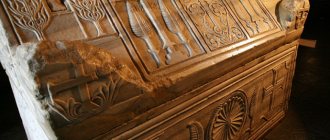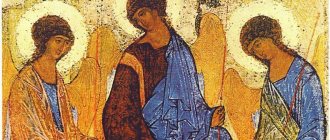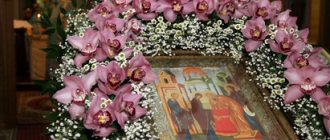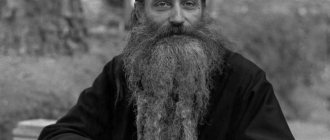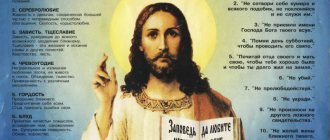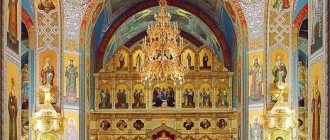What is hesychasm?
The term comes from the Greek word “hesychia”, the meaning of which is calm, silence and solitude. Hesychasm is a practice of monks in the Orthodox faith based on the teachings of Jesus. Its main goal is to contemplate the Divine light that will emanate from the heart. Mention of this practice was found in documents of the 3rd-4th centuries. n. e. It became most widespread thanks to Gregory Palamas in the 14th century. Hesychasm received official recognition in 1351.
According to this mystic practice, the Lord cannot be known through logical thinking or scientific knowledge. To see it, you need volitional efforts, you need to be focused and receive the condescension of God's grace. Three directions of hesychasm can be distinguished:
- hermitage - appeared in the first centuries of monasticism;
- spiritual practices that involve repeating Jesus' prayer;
- the teaching of Gregory Palamas on uncreated energies.
Hesychasm in philosophy
The basis of the practice is spiritual reincarnation, which gives a chance to communicate and see the Lord. Hesychasm in philosophy is an opportunity to understand that man is a microcosm in which the entire Universe is reflected. People who commit sins darken the image of the Lord in themselves, but if you live according to the commandments, you can cleanse your soul and get closer to the Higher powers through prayers. God constantly reveals himself to the world in his actions, such as power, love, wisdom, and so on.
Hesychasm in Orthodoxy
Practices can be divided into several elements, which must be performed exclusively in strict sequence.
- Cleansing the heart
. Christian hesychasm is based on the fact that only a person with a pure heart can see God. It is believed that people should be more ascetic in food, clothing and other areas. It is important to distract yourself from any objects of sensory pleasure, which will allow you to concentrate on communicating with the Lord. You can use mental-heart prayers, the constant pronunciation of which Jesus himself attached. - Solitude
. You need to practice only alone and preferably in the dark. This is important for maximum concentration. - Connecting mind and heart
. Orthodox hesychasm involves the use of meditation and breathing exercises. As a result, the mind is concentrated in the region of the heart, where the soul is located. This is commonly called “smart doing.” - Prayer
. The Jesus Prayer must be repeated continuously and in one breath. This is a special art that can be learned. - Silence
. After all the stages have been completed, there is a concentration on the heart and the formation of silence, which is important for communication with the Lord. - The appearance of the Tabor Light
. The last stage indicates entry into communion with God.
HESYCHASM
(from the Greek ἠσυχία - peace, silence) is an ancient tradition of spiritual practice that forms the basis of Orthodox asceticism.
Hesychasm researcher Fr. John Meyendorff (1926–92) identified the following meanings of the term: 1) solitary, hermitic monasticism (as opposed to cenobitic monasticism), proceeding in silence (silence); 2) developed in Sinai and Athos and reached its peak in the 14th century. a special school and technique of prayer, often called “mental doing” (πρᾶξις νοερά) and having at its core the constant utterance in the mind of the Jesus Prayer “Lord Jesus Christ, Son of God, have mercy on me, a sinner”; 3) the teaching of St. Gregory Poloma
(1296–1359), or palamism, the theological expression and justification of hesychasm (the concept of uncreated Divine energies operating in the world and man); 4) a phenomenon in the religious life of Russia in the 14th–16th centuries, reflected in monastic life and spiritual culture.
Early stage 4th–5th centuries – the origin of Christian asceticism in Egypt and Palestine, the time of activity of its creators and teachers (St. Anthony the Great, Macarius the Great, John Chrysostom
, Deacon
Evagrius of Pontus
, St.
Nil of Ancyra, John Cassian, Ephraim the Syrian, etc.). At this stage, two tishas, or channels, of asceticism are formed, monasticism, cenobious (from the Greek κοινός βίος, common life), cenobitic, and anchorite (from the Greek ἀναχωρητής, hermit), desert-dwelling; later they are joined by a third, intermediate type - skete, or idiorhythmic, monasticism, when monks have separate residences, but joint worship, a single spiritual rhythm. Hesychasm was created within the framework of the second channel and was often identified with it, but in certain periods, in certain regions (in particular, in Russia) it spread in other channels. The initial elements of hesychasm are the dialectic of solitude-unity, withdrawal from the world and connection with it in love; the primacy of prayer; the need for teaching, guidance and hence the institution of spiritual mentors, elders; a flexible combination of internal making and external arrangement, with the primacy of the former. The next period (approximately 5–9 centuries), usually called “Sinaitic hesychasm,” although its leading representatives are not only the Sinaitic ascetics of Sts. John Climacus
(7th century), Hesychius (7th–8th centuries) and Philotheus (9th–10th centuries), but also Sts. Isaac the Syrian, Diadochos of Photiki (Northern Greece), elders Barsanuphius and John of Gaza, their disciple Abba Dorotheos, etc. This is the stage of crystallization of hesychasm as a discipline, a clear method of spiritual practice. The core of the tradition is the school of prayer and control of consciousness, ensuring continuity of prayer. This spiritual process has an ascending nature and is divided into a number of stages: repentance - struggle with passions - hesychia - “bringing the mind into the heart” - dispassion - pure prayer - contemplation of the uncreated Light - transformation and deification. The state of complete aspiration towards God, interpreted by Orthodox theology as the perfect union of human energies with Divine energy and grace, is deification—the transformation of human nature, achieved in the fullness of mystical communion with God.
At the end of 10 - beginning. 11th century The mysticism of St. makes a special contribution to the tradition of hesychasm. Simeon the New Theologian. In the 14th century Hesychasm becomes for a time a central factor not only in the ecclesiastical, but also in the secular history of Byzantium. Its active revival was being prepared in the 13th century. activities of St. Gregory of Cyprus, Theoliptus of Philadelphia, Nikephoros the Solitary and is deployed primarily on Athos. Higher spiritual states, including light contemplations, come to the fore; in the 1330s monk Barlaam of Calabria
acts with theological criticism of these contemplations and hesychasm in general. “Hesychast disputes” arise, the church conflict is intertwined with political struggle and civil war, and, finally, the “triumph of Orthodoxy” occurs, the conciliar recognition of the hesychast experience and the dogmatic consolidation of its principles. Hesychasm receives theological justification in the teachings of Palamas (“theology of energies”); in practice and theory, an orientation toward the participation of the body in the spiritual process is affirmed (the doctrine of the deification of the whole human being); hesychast practice goes beyond the monastic environment, revealing the universalist potential inherent in it.
There are branches of the hesychast tradition in all countries of Orthodoxy - Bulgaria, Serbia, Romania, Georgia, but its main focus in the post-Byzantine period is in Russia. An active monastic movement arises here following the Christianization of Rus' and is directly oriented towards the early Egyptian-Palestinian desert habitation, while the influence of the more profound “Sinai hesychasm” remains insignificant. During the era of Muscovite Rus' 14–15 centuries. the influence of both “Sinaitic hesychasm” and the Byzantine hesychast revival of the 14th century. affects many areas of culture, church and social life. This tradition is joined by Sergius of Radonezh, Theophan the Greek, Andrei Rublev, and its full and pure expression is given by St. Neil Sorsky
and the Trans-Volga (“non-acquisitive”) monastic movement led by him.
However, Russian (and Orthodox) religious consciousness in its history and structure is determined not only by the hesychast attitude towards deification, but also by the attitude towards sanctification, sacralization, inherited from pagan religiosity (thus, the relationship between the Church and worldly power is usually built in Orthodoxy in the element of sanctification). The relationship between the two attitudes is tense, sometimes conflicting, and in Russian history of the 16th–18th centuries. the line of sanctification replaces the line of deification. The reverse process that began with the activity of St. Paisiy Velichkovsky (1722–94) and his students, gradually grew into the hesychast revival of the 19th–20th centuries. Its main milestones: the creation and dissemination of the Russian “Philokalia” (a fundamental set of hesychast texts); the creation of influential centers of hesychasm (Optina Pustyn, Valaam, Sarov, etc.); the feat of the teachers of Russian hesychasm - St. Tikhon of Zadonsk, Seraphim of Sarov, Ignatius Brianchaninov
, Theophan the Recluse, in the 20th century.
– St. Silouan of Athos and his student Abbot Sophrony (Sakharov); the formation of pilgrimage and, in particular, eldership - in the latter, as in the “monastery in the world” movement, coming from the Slavophiles and developed in the 20th century, the emergence of hesychasm into the world takes place. The theological and philosophical thinking through hesychasm, begun by Maximus the Confessor
and especially Palamas, was not accepted and continued in Russia until the 20th century, when an understanding of the experience of the hesychast tradition was given both by its direct bearers, the Athonite ascetics Bishop.
Vasily (Krivoshein) and Abbot Sophrony (Sakharov), as well as theologians of the Russian diaspora - V.N. Lossky
(who gave the first complete presentation of Orthodox theology in the light of hesychasm), Fr.
Georgy Florovsky
(who described a specific typology of Orthodox thought in the concept of “neopatristic synthesis”) and his student Fr. John Meyendorff. Their activities are closely related to the works of major Orthodox theologians of the Balkans and the West - Fr. Dumitru Staniloae (Romania), St. Justin Popovich, Metropolitan. Amfilohija Radovicha (Serbia), bishop. Callista Ware (England), Metropolitan. John Zezulas, Chr. Yannaras (Greece), etc. The direction of theological thought that took shape here, called “Orthodox energeticism,” continues to develop, confirming the thesis that “hesychasm contains a constructive response to the challenge posed to Christianity by modern times” (Meyendorff).
Literature:
1. Philokalia, vol. 1–5. Sergiev Posad, 1992;
2. Zarin S.M.
Asceticism according to Orthodox Christian teaching. M., 1996;
3. Smart practice of the Jesus Prayer. – Sat. teachings of St. Fathers and experienced workers, comp. Abbot Khariton, 3rd ed. M., 1992;
4. Candid stories of a wanderer to his spiritual father. M., 1991;
5. V.N.Lossky
, Mystical theology of the Eastern Church, “Theological Works”, vol. 8. M., 1972;
6. Hieromonk Sophrony.
Elder Silouan, 2nd ed. M., 1991;
7. Archim. Sophrony.
See God as He is. Essex, 1985;
8. Synergy. Problems of asceticism and mysticism of Orthodoxy, ed. S.S. Khoruzhy, M., 1995: Khoruzhy S.S.
On the phenomenology of asceticism, M., 1998;
9. Meyendorff J.
Byzantine Hesychasm: historical, theological and social problems. L., 1974.
S.S. Khoruzhy
Modern hesychasm
In the world you can find several modern centers of hesychasm, and these include the following examples:
- Autonomous monastic state on Mount Athos, Greece
. Prayer books in the twentieth century revived hesychasm and gave it new impetus. There are several desert cells on the Holy Mountain, where monks who practice the theology of hesychasm live. - Hermitages, Moldova
. In the monasteries located in this country, there are people who practice hesychasm. - Monastery of John the Baptist, UK
. Hesychasm is also promoted for contemporaries in England. The practice was spread by the disciple of St. Silouan.
Key Aspects
There are a few key components worth knowing. Most scholars say that there are 10 concepts of hesychasm in Christianity . Let's look at the most basic of them:
- purifying the heart and focusing on spiritual life;
- continuous reading of sacred texts;
- combination of heart and mind;
- silence, attention, sobriety;
- calling on the name of God for reproof;
- phenomenon of light and others.
The best article for you, go to: The relics of St. Silouan of Athos: in which temple are they located, what to ask for, what they help with
Everyone’s attitude to this phenomenon is quite specific. But we should not forget that there are some miracles that took place among hesychasms. Perhaps this is how the Lord's grace descended on them.
May God bless you!
Hesychasm - books
There are several literary works that expound the basic ideas and philosophy of hesychasm. Among the most popular books are the following:
- “Triads in Defense of the Sacred-Silent” G. Palamas
. The author defends and systematizes hesychasm and other teachings aimed at uniting man with God. - “One night in the desert of the Holy Mountain” Hierotheus (Vlahos)
. This book describes that hesychasm is a spiritual path and reveals the meaning of the Jesus Prayer, the stages of its training and possible results.
The path of the ancient hermits
The most ancient meaning of the term “hesychasm” reflects the hermit form of Christian monasticism that arose at the dawn of monasticism in Egypt, Palestine and Asia Minor at the end of the 3rd century. The word “hesychia” - “silence” - indicates the ideal of hermitage, different from the cenobitic monasticism founded by the Monk Pachomius.
The life of a hesychast monk was determined by inner prayer, intelligent work, and the desire for deification. When hermit monasticism attracted educated Greeks brought up on the ideas of Neoplatonism, the interpretation of hermitage expanded to include non-biblical elements, namely the opposition of matter and spirit.
The most famous exponent of this stage in the history of hesychasm was Origen's student Evagrius of Pontus. The teachings of Evagrius were based on the idea of the original existence of all creatures as perfect “minds” contemplating the Divine essence. The goal of spiritual life, according to Evagrius, is the restoration of the original contemplation of the Divine essence. In this system, a person was called to disincarnation, which was in conflict with the dogma of the Incarnation (John 1:14). The condemnation of Origen and Evagrius by the Church at the Fifth Ecumenical Council limited the danger that threatened contemplative monasticism, but did not abolish the popularity of hesychasm. Smart doing began to be understood not in the sense of disembodiment, but as communion with the incarnate Word through the Jesus Prayer.




